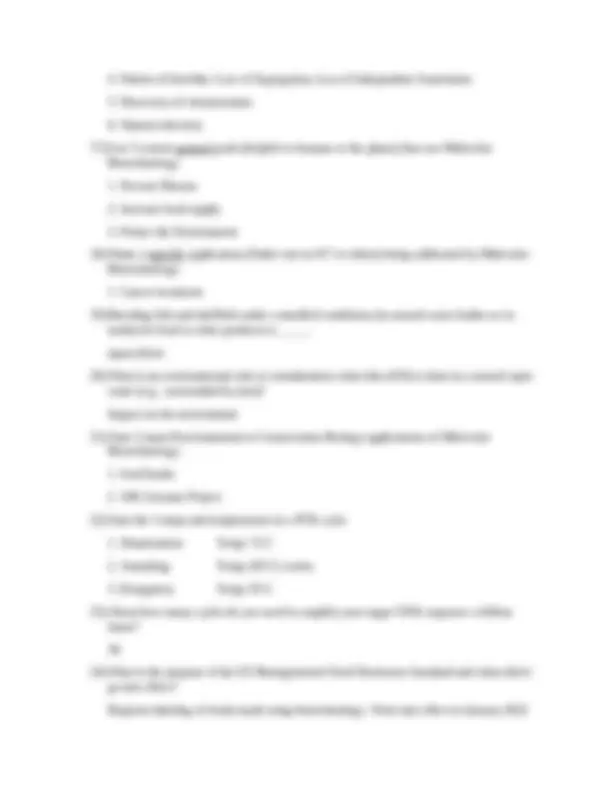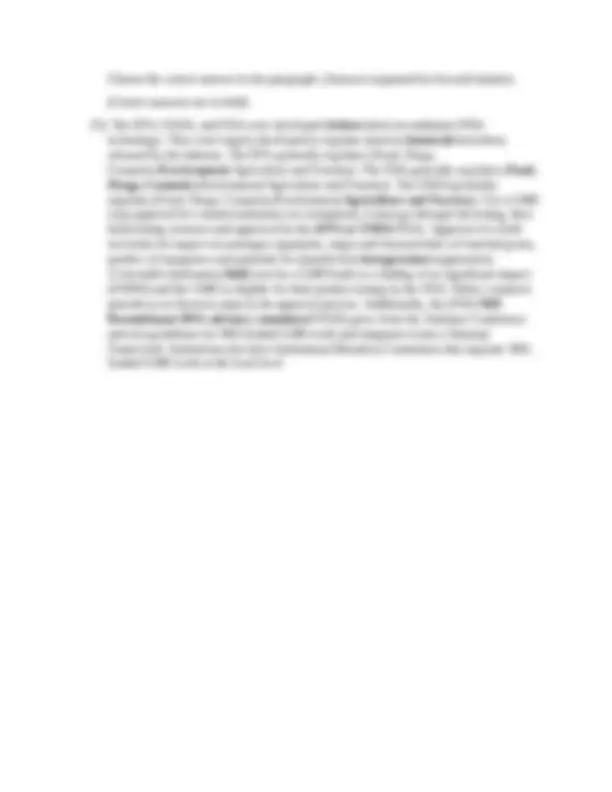




Study with the several resources on Docsity

Earn points by helping other students or get them with a premium plan


Prepare for your exams
Study with the several resources on Docsity

Earn points to download
Earn points by helping other students or get them with a premium plan
Community
Ask the community for help and clear up your study doubts
Discover the best universities in your country according to Docsity users
Free resources
Download our free guides on studying techniques, anxiety management strategies, and thesis advice from Docsity tutors
Quiz questions and answers. True/False, short answer
Typology: Quizzes
1 / 4

This page cannot be seen from the preview
Don't miss anything!



Molecular Biology and Biotechnology Quiz 1 True/False
plates containing an antibiotic. The plasmid must also contain a gene for resistance to that antibiotic. True
Choose the correct answer in the paragraph. (Answers separated by forward slashes) (Correct answers are in bold)